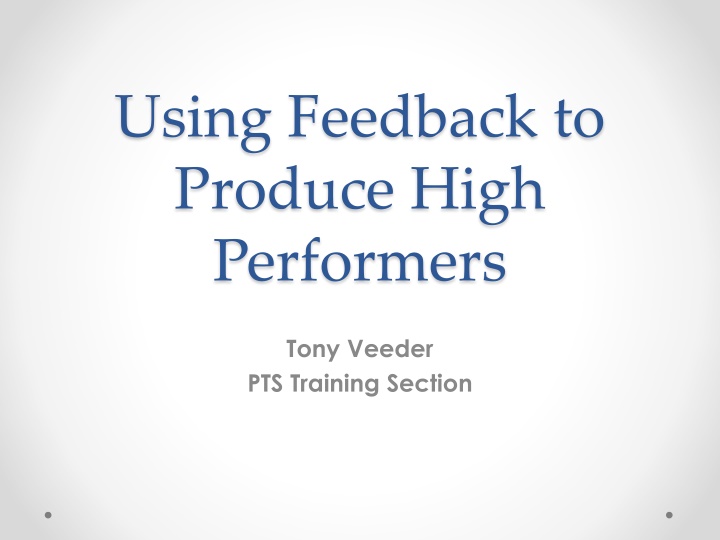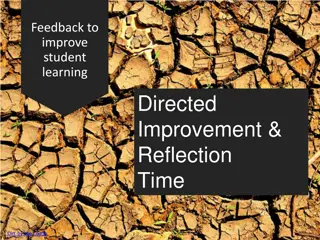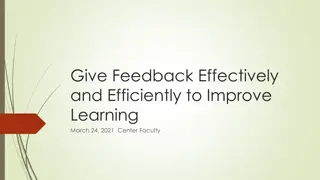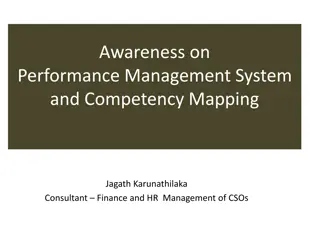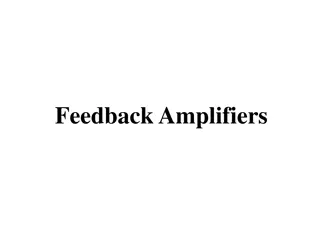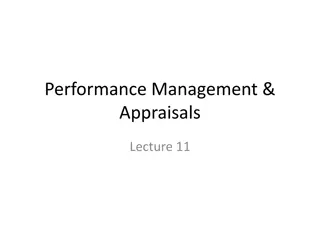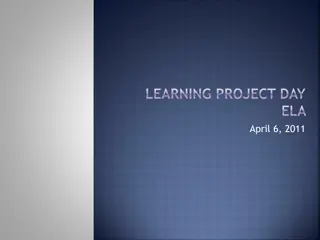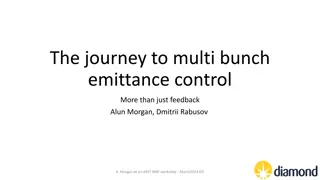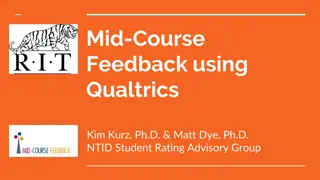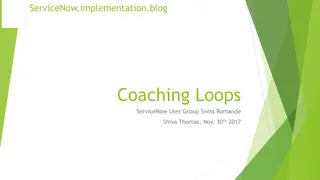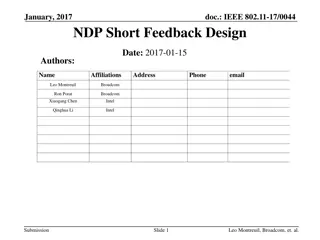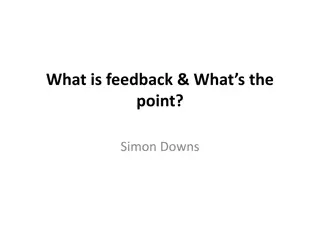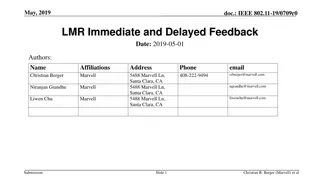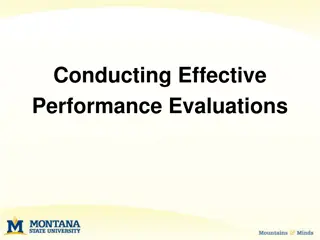Effective Feedback Strategies for High Performance
Feedback plays a crucial role in helping individuals improve performance and reach their full potential. From providing helpful feedback to reinforcing desired behaviors, this guide explores various strategies, including redirection, reinforcement, and F.A.S.T. feedback, to enhance workplace performance and success. By understanding the importance of feedback and implementing effective feedback practices, organizations can cultivate high performers and promote continuous growth.
Download Presentation

Please find below an Image/Link to download the presentation.
The content on the website is provided AS IS for your information and personal use only. It may not be sold, licensed, or shared on other websites without obtaining consent from the author.If you encounter any issues during the download, it is possible that the publisher has removed the file from their server.
You are allowed to download the files provided on this website for personal or commercial use, subject to the condition that they are used lawfully. All files are the property of their respective owners.
The content on the website is provided AS IS for your information and personal use only. It may not be sold, licensed, or shared on other websites without obtaining consent from the author.
E N D
Presentation Transcript
Using Feedback to Produce High Performers Tony Veeder PTS Training Section
Helpful Feedback The process of giving information to a person or a group in such a way as to help them improve their performance Is a fundamental coaching skill Is an ongoing process Using Feedback 2
Effective Feedback Honors competence and reinforces desired behaviors Aligns expectations and priorities, and is goal oriented Fills knowledge gaps, focused on acts Prompts corrective actions, supportive and continual Alleviates fear, directed at the future Using Feedback 3
Workplace Feedback Redirection o Behaviors and performance that do not contribute to the group or goals o Helps develop alternative strategies Reinforcement o Behaviors and performance that do contribute to the group or goals o Encourages to repeat and develop Using Feedback 4
Reinforcement Almost everyone is comfortable with giving compliments to others Sometimes we forget how important this is to most people All need acceptance, recognition and praise Sparks increased productivity, desire to do better, and improved self-esteem Using Feedback 5
F.A.S.T. Feedback Frequent Accurate Specific Timely Using Feedback 6
Goals + Feedback = Success Activity 4 groups of soldiers 20 kilometer march Each receive different instructions Information during march varied Using Feedback 7
Redirection Many times is dreaded. Why? We are human and all make mistakes Is part of growing and learning but this feedback doesn t contribute to goals Requires developing solutions Bad feedback experiences affect how you approach feedback to others Must help others improve despite the dread and conflict Using Feedback 8
Redirection Rules Must: Be delivered in private, never public Be directed towards the organization s goals Be based on behavior, not the person Be presented in a dialogue and must be solution oriented Result in an improvement action plan Using Feedback 9
Useful Feedback Focused on acts, not attitudes Directed toward the future Goal oriented Multidirectional Supportive Continuous Using Feedback 10
Feedback Filters Is it true? Is it kind? Is it necessary? Using Feedback 11
Redirection Checklist Did I use the three filters? Do I have proof or knowledge? Do they know how to do the job? Do they have the needed resources? Is there something interfering with their success? Is this the appropriate time and place to give the feedback? Using Feedback 12
Redirection Considerations It is always done in private. Where should you give it? Is it the best time for it to be given? What triggers their hot buttons ? Have you considered and planned for how they might react? Using Feedback 13
L.A.S.T. Feedback Listen Align Solve Thank them Using Feedback 14
Putting it All Together You should be: calm timely honest specific descriptive, not subjective goal driven Using Feedback 15
Putting it All Together You should : put the feedback in context not be judgmental speak from the heart assume the best focus on the performance listen Using Feedback 16
Putting it All Together You should : Build a foundation of trust mutually agree on goals recognize improvement be appreciative Close the discussion in a professional manner listen Using Feedback 17
Putting it All Together And most importantly you should: follow up make feedback part of the normal workplace routine Using Feedback 18
Putting it All Together Activity Remember that staff person you thought about at the beginning of the training session? What s your plan for providing feedback to the person? Using Feedback 19
Summary Feedback what is it? Effective feedback Types of feedback Reinforcement and F.A.S.T. Redirection and L.A.S.T. Feedback tips Feedback action plan Using Feedback 20
Questions? Thank you for your attention. Please fill out your evaluations. Using Feedback 21
